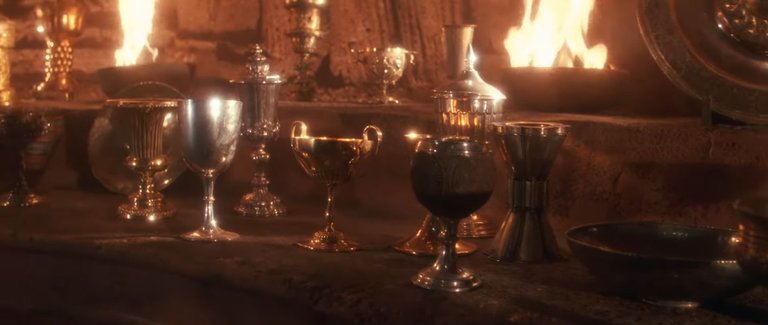THE SYMBOLISM OF HOLY GRAIL IN INDIANA JONES AND THE LAST CRUSADE.

In Indiana Jones and the Last Crusade, the miraculous water that heals Henry's wound was not because of the Holy Grail. Indy himself did not get the "correct" Grail. In fact, the chamber may not even contain a true Holy Grail at all.
The entire final act, particularly the Canyon of the Crescent Moon scene, functions as a literary device. It amplifies the Hero's traits within the framework of Joseph Campbell's monomyth. This specific location serves as the "Special Place" where fantastical elements and suspension of disbelief take hold. Here, the aged Knight Templar acts as the "Sage" archetype, implicitly validating Indy as "The Worthy One" through his initial smile upon seeing him (one of many plays of Gestalt psychology). Indiana confronted his own doubts (his Jungian "Shadow"), took a selfless "Leap of Faith" across the invisible bridge, and finally, to his father's aid.
The miracle lies not in the Holy Grail, but in the Hero's unwavering love for his father. This is manifested on screen as "magic" woven into the screenplay, riding on the myth of the Holy Grail. Ultimately, it is the power of belief that empowers the miracle to happen.
Steven Spielberg's brilliance lies in his mastery of "show, don't tell," a fading art in modern cinema. By having Indiana Jones drink from the Grail, Spielberg subtly suggests a kind of immortality, mirroring the enduring legacy of classic cinematic icons. However, the new Hollywood, fueled by greed, exploited the Indiana Jones franchise, leading to its decline – a fate not unlike that of the villain who drank from the Grail and Elsa who fell into the chasm.
"Elsa never really believed in the Grail," said Henry (Sean Connery).
"She thought she'd found a price."
Indiana then asked his father (Sean Connery), "What did you find, Dad?" He answered, "Illumination."
Thus,the Father, the Son, and the Holy S...........system failure
The signs are all there since the very beginning and we didn't notice.
ikr